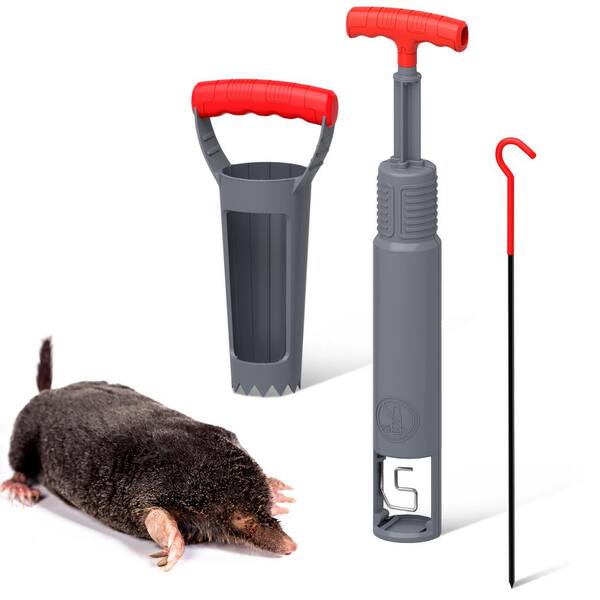Ultimate Guide to Gopher Control: Tips for a Pest-Free Yard
In the quest of keeping a flourishing garden, managing gophers can present a formidable difficulty to also the most experienced garden enthusiasts. These evasive rats are notorious for creating chaos underground, triggering substantial damages to plant roots and creating unpleasant piles on the surface area. Nevertheless, fear not, as there are proven methods and strategies that can aid you redeem your yard from these relentless pests. By understanding gopher behavior, implementing all-natural repellents, making use of reliable capturing techniques, and developing physical barriers, you can substantially alleviate gopher invasions and protect the health of your garden.
Understanding Gopher Actions
To effectively regulate gophers in your garden, it is crucial to understand their actions patterns and practices. Gophers are singular creatures, with each gopher keeping its own burrow system.

Natural Repellents and Growing Strategies
Applying all-natural repellents and tactical growing techniques can effectively prevent gophers from inflicting chaos in your garden. Additionally, producing barriers underground making use of gopher baskets made of wire mesh can shield the roots of your plants from being consumed by gophers.
Additionally, making use of natural killers like owls, snakes, or tamed animals such as cats can assist manage the gopher population in your area. Serpents and owls are natural predators of gophers and can assist maintain their numbers in check. Motivating these predators to populate your garden can supply a natural type of gopher control.
Reliable Trapping Strategies
Making use of humane and effective trapping techniques is vital in taking care of gopher infestations in your garden. When selecting traps, it is essential to select ones specifically developed for gophers to boost the chance of capturing success.
Tunnel traps are put straight into gopher tunnels and are effective at capturing gophers as they travel through their burrows. Cinch traps are positioned in the major tunnel of the gopher and are set off when the gopher pushes versus the trigger plate.
To boost the efficiency of trapping, it is recommended to situate energetic tunnels by probing the ground and establishing traps in these locations. On a regular basis inspecting and resetting traps is important for successful gopher control. By utilizing these capturing strategies, you can successfully decrease gopher populations in your garden and stop more damages to your plants.
Producing Physical Obstacles
One effective approach for hindering gophers from attacking your garden is to set up durable cable mesh obstacles underground. These barriers act as a physical deterrent, stopping gophers from delving into your yard beds and causing damage to your plants.

Keeping a Regular Surveillance Arrange
Regular tracking of your garden is critical in successfully managing gopher task and click resources preventing possible damage to your plants. By developing a routine assessment schedule, you can immediately spot any kind of signs of gopher existence and take needed activities to deal with the concern before it intensifies. Allot certain times each week to walk via your garden, paying very close attention to any mounds, passages, or wilting plants, as these can indicate gopher activity.
Throughout your monitoring sessions, think about making use of gopher-specific indicators such as fresh dirt piles, munched roots, or recently dug passages to recognize active areas. Keep a journal or map to track these transfer time, aiding you pinpoint high-traffic zones that call for instant treatment. In addition, consider setting up motion-activated electronic cameras or linked here traps in tactical places to collect even more details about gopher behavior patterns in your garden.
Routine surveillance not just permits you to assess the efficiency of your gopher control techniques yet also enables you to adapt your methods based upon real-time monitorings, ultimately causing a much healthier and pest-free yard.
Conclusion
To conclude, managing gophers in your yard requires a combination of comprehending their behavior, making use of natural repellents and growing techniques, reliable capturing strategies, developing physical obstacles, and preserving a routine monitoring schedule. By implementing these strategies, you can maintain your yard pest-free and make sure the health and wellness of your plants. Keep in mind to stay positive and alert in your gopher control efforts to maintain a gorgeous and thriving yard.
By recognizing gopher habits, executing natural repellents, making use of efficient trapping approaches, and developing physical barriers, you can significantly mitigate gopher invasions and guard the health of your garden.
In addition, creating obstacles underground making use of gopher baskets made of cord mesh can shield the roots of your plants from being eaten by gophers.Box traps are positioned near gopher piles and serve as a welcoming tunnel for the gopher to get in. Tunnel traps are inserted straight into gopher passages and are efficient at capturing gophers as they travel via their burrows. Cinch traps are positioned in the primary passage of the gopher and are activated when the gopher presses against the trigger plate.